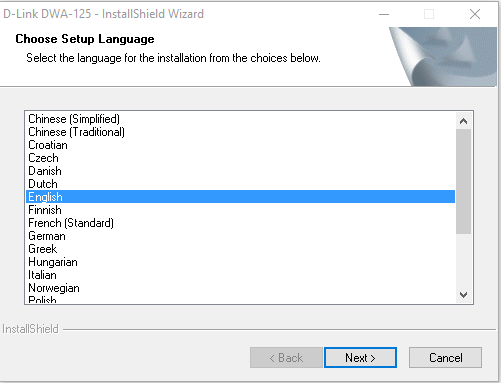

- VALIDITY FINGERPRINT SENSOR DRIVER WINDOWS 10 DOWNLOAD HOW TO
- VALIDITY FINGERPRINT SENSOR DRIVER WINDOWS 10 DOWNLOAD INSTALL
- VALIDITY FINGERPRINT SENSOR DRIVER WINDOWS 10 DOWNLOAD DRIVERS
- VALIDITY FINGERPRINT SENSOR DRIVER WINDOWS 10 DOWNLOAD UPDATE
- VALIDITY FINGERPRINT SENSOR DRIVER WINDOWS 10 DOWNLOAD WINDOWS 8.1
VALIDITY FINGERPRINT SENSOR DRIVER WINDOWS 10 DOWNLOAD UPDATE
Option 2 – Update your driver from official websites Don’t forget to restart your computer for the changes to take effect even if you’re not asked to. Now your driver has been updated by Windows successfully.Wait till the download and installation process finishes.Click Search automatically for updated driver software.Right-click on Validity Sensors (WBF) to open its context menu.Click the ▷ symbol to the left of Biometric Devices to expand its drop-down list. Then select Device Manager from a list of search results. After the Start screen shows up, click the magnifier icon located in the upper right corner.Click the Windows Logo key in the bottom left corner of your computer screen.
VALIDITY FINGERPRINT SENSOR DRIVER WINDOWS 10 DOWNLOAD WINDOWS 8.1
The following screenshots come from Windows 8.1 but this option is also available to other Windows versions. Try to update your Validity fingerprint sensor driver from within Device Manager: Option 1 – Update your driver via Device Manager It’s all done with just a couple of mouse clicks – easy even if you’re a computer newbie.
VALIDITY FINGERPRINT SENSOR DRIVER WINDOWS 10 DOWNLOAD DRIVERS
Option 3 – Update drivers automatically (Recommended) – This is the quickest and easiest option.

VALIDITY FINGERPRINT SENSOR DRIVER WINDOWS 10 DOWNLOAD INSTALL
Option 2 – Update drivers from official websites – You’ll need some computer skills and patience to update your drivers this way, because you need to find exactly the right driver online, download it and install it step by step. Option 1 – Update drivers via Device Manager – It’s the most common method but sometimes Windows may not detect or provide you with the latest drivers. Each of them has different features so you may pick the one you like most and see whether that answers your demand. There’re mainly 3 ways for you to update the Validity fingerprint sensor drivers.
VALIDITY FINGERPRINT SENSOR DRIVER WINDOWS 10 DOWNLOAD HOW TO
Now follow this tutorial and update the driver by yourself! How to update Validity fingerprint sensor drivers Drivers that are not compatible with your operating system may impose a detriment upon your PC, even causing it to crash unexpectedly. Unlocks new features and configuration options in your devices, especially with video cards and gaming devices.Looking for Validity fingerprint sensor drivers for Windows 10/8.1/8/7? If the answer is “yes,” then you’ve come into the right place. If your desktop or laptop is running slow, or keeps crashing or hanging, there is a good chance that updating your drivers will fix the problem.Įnsures your hardware runs at peak performance.įixes bugs so your system will have fewer crashes. Many computer problems are caused by missing or outdated device drivers, especially in Windows 11. Next, update individual drivers or all of the necessary drivers with one click. When the scan is complete, the driver update utility will display a results page showing which drivers are missing or out-of-date: Once you download and run the utility, it will scan for out-of-date or missing drivers: It will Update all of your drivers in just a few clicks, and even backup your drivers before making any changes. The Driver Update Utility automatically finds, downloads and installs the right driver for your hardware and operating system. Automatic updates could save you hours of time. If you are having trouble finding the right driver, stop searching and fix driver problems faster with the Automatic Driver Update Utility. Visit our Driver Support Page for helpful step-by-step videos Install Drivers Automatically In most cases, you will need to reboot your computer in order for the driver update to take effect. Locate the device and model that is having the issue and double-click on it to open the Properties dialog box.Ĭlick the Update Driver button and follow the instructions. In Windows XP, click Start -> Control Panel -> Performance and Maintenance -> System -> Hardware tab -> Device Manager button In Windows Vista, click Start -> Control Panel -> System and Maintenance -> Device Manager In Windows 7, click Start -> Control Panel -> Hardware and Sound -> Device Manager In Windows 8, swipe up from the bottom, or right-click anywhere on the desktop and choose "All Apps" -> swipe or scroll right and choose "Control Panel" (under Windows System section) -> Hardware and Sound -> Device Manager In strong>Windows 11, Windows 10 & Windows 8.1, right-click the Start menu and select Device Manager It allows you to see all of the devices recognized by your system, and the drivers associated with them. To install a driver in Windows, you will need to use a built-in utility called Device Manager. Once you download your new driver, then you need to install it.


 0 kommentar(er)
0 kommentar(er)
